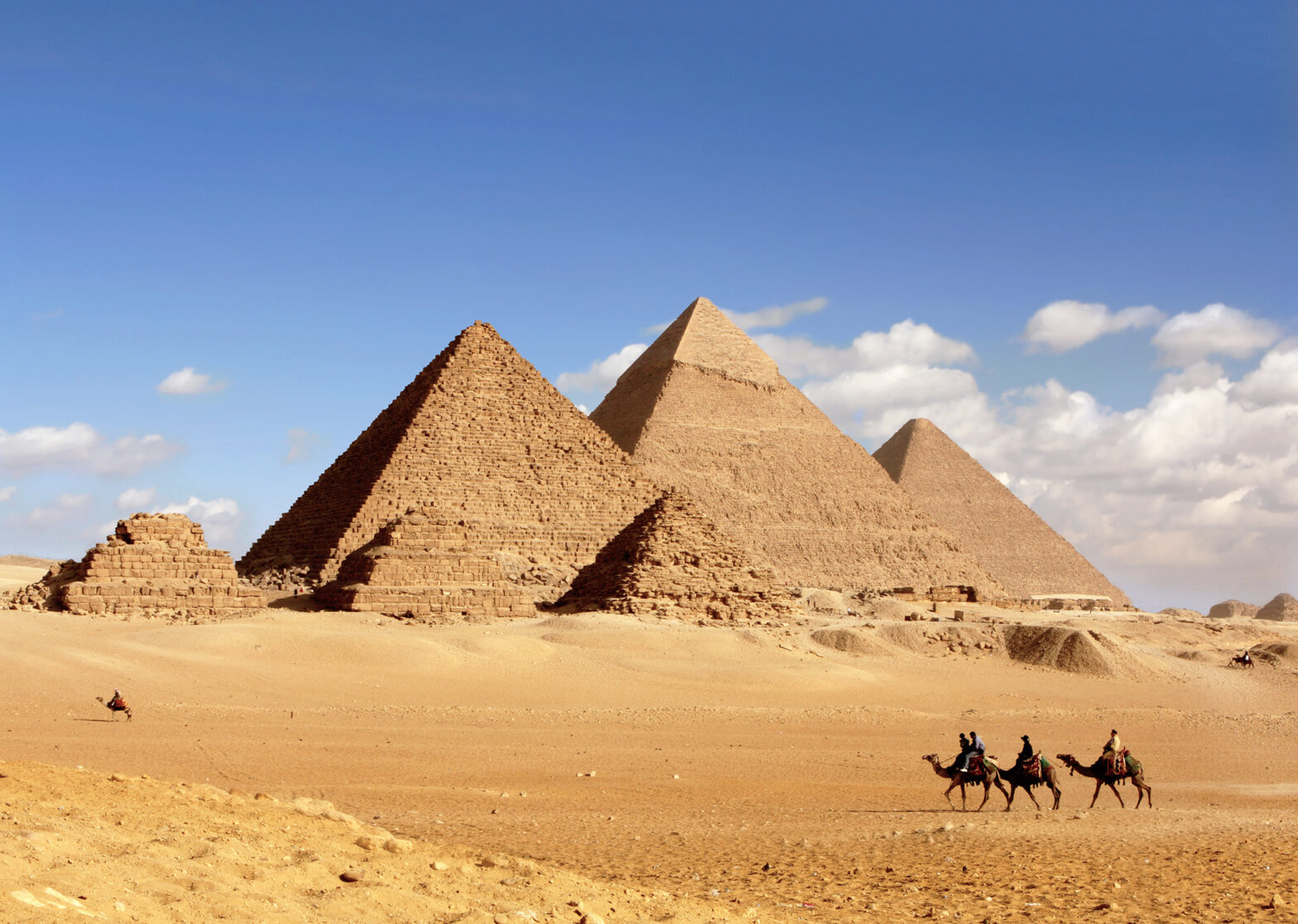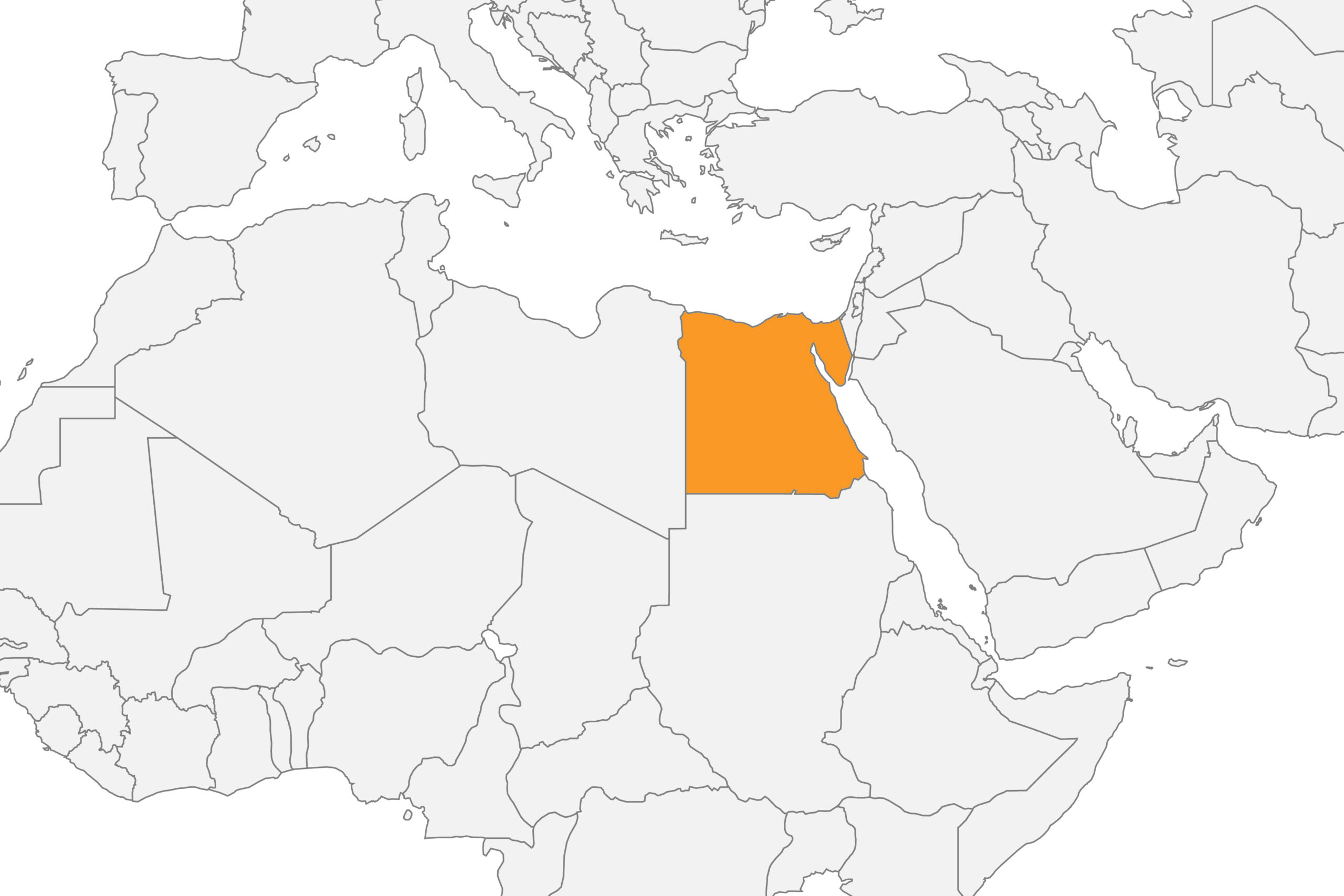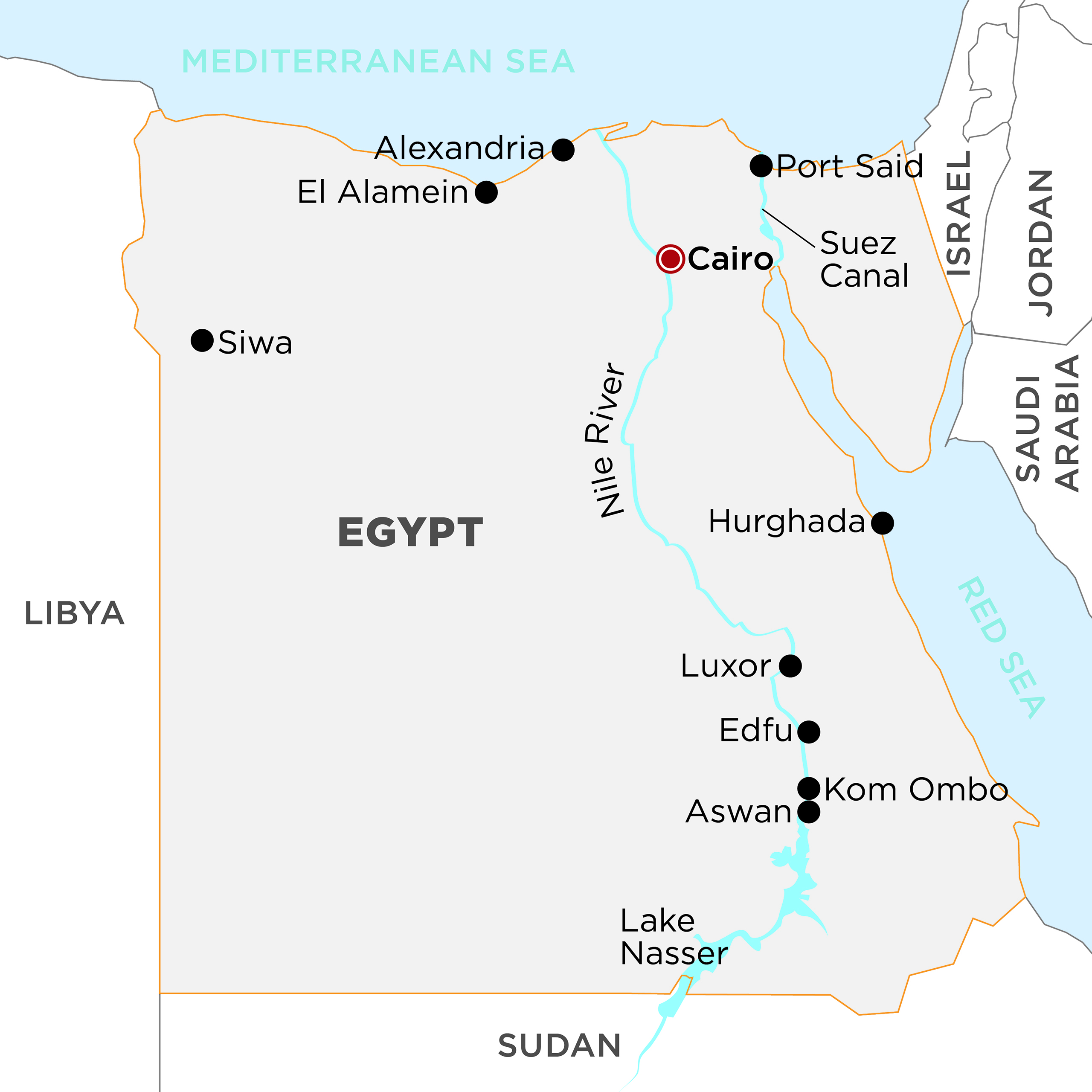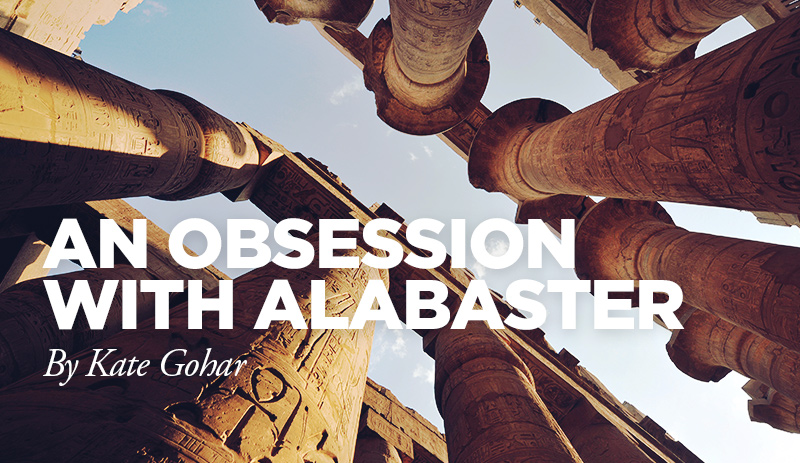Egypt Tours
The Pyramids of Giza are probably one of the most recognised images in the world and everyone should make at least one visit in their lifetime.
Combine the chaos of Cairo with a serene sail along the Nile including the Valley of the Kings and tomb of Tutankhamun, perhaps a visit to the Red Sea, St Catherine’s Monastery, the Western Desert or El Alamein and your journey through Ancient Egypt is complete. World Journeys can tailor your journey exactly as you wish as well as providing wonderful insight and knowledge to make your Egyptian experience complete.
Read More...Cairo
Be sure to visit the Pyramids of Giza & the Sphinx before exploring Cairo’s Museum of Egpytian Antiquties. More commonly known as the Egyptian Museum it houses an extensive collection of ancient antiquities which will help you to put into context the Ancient Egyptian culture.
Cruising the Nile
Combine the chaos of Cairo with a serene sail along the Nile, cruising on small luxury ships between Luxor and Aswan in Upper Egypt. Stopping at the many temples along the way this a relaxing way to see life on the Nile.
Luxor
Be caught up in the history of the majestic temples of Luxor and Karnak, the Valley of the Kings and the Temple of Hatshepshut. The temple of Karnak is one of the most impressive and the largest temple complex ever built by man.
Aswan
A city on the Nile famous for its archaeological sites and peaceful feel – it is the perfect place to enjoy a felucca ride at sunset. Highlights of Aswan also include the High Dam, Philae Island and the unfinised Oblelisk.
Alexandria
The second largest city in Egypt is known as “The Pearl of the Mediterranean”, which has an atmosphere that is more Mediterranean than Middle Eastern.
The best time to visit Egypt is during their winter: November – April when the days are warm and cloudless, particularly in the desert and Upper Egypt. Summers are blisteringly hot with temperatures soaring above 40oC.
I love cruising on the Nile; you get a good dose of history and culture each morning as you explore, but afternoons are usually spent on the sundeck watching fishermen busy with their nets, children squealing with delight as they wash their horses at the waters’ edge, a famer with his buffalo staggering up the bank with a precarious pile of sugarcane and young men playing football on a rough pitch overlooking the river. The sun sinks towards the horizon more quickly than I could have imagined, its final rays bursting in vibrant shards of red, orange and purple above me.
It’s easy to understand why the Egyptians thought the Sun God, Ra, was so incredibly powerful. I have seen endless Egyptian sunsets but still watch transfixed; if it weren’t for the risk of spilling my marguerita, I am almost ready to bow down in front of Ra myself. In Luxor there are plenty of places to shop and yes, the locals may seem pushy. I suppose it helps that I speak Arabic; if only to tell the more persistent vendors that I don’t need to know my name in hieroglyphics, I already own a galabeya and have enough perfume oil to start my own shop. But I just can’t stop buying alabaster pots and bring at least one home after every trip; the soft, soapy texture is irresistible under my fingertips while light shining through the thinly carved stone is utterly captivating.
The ancient Egyptians believed that “To speak the name of the dead is to make him live again” and nowhere is this more apparent than in the Valley of the Kings. The king’s formal names and titles are inscribed in each tomb along with images and statues. Close by, the mortuary temple of Queen Hatchepsut is one of the most dramatically situated in the world. It’s a stunning example and almost as exciting – there is an alabaster carving factory on the road back!
Kate Couling, Director
Currency Egyptian Pounds
Language Arabic
Why we love it Allow the stories we have all heard from childhood about Howard Carter discovering the Tomb of the boy King Tutankhamun, the pyramids, sphinx and the mighty River Nile leap to life. Wandering vast halls built thousands of years ago and sitting on the deck of a cruise ship as it sails gently past sugarcane fields and mighty temples on the river bank fulfils everyone’s dream of a visit to Egypt.
Weather Egypt has become a year round destination but mainly enjoys cool dry winters and very hot summers.
Upper Egypt sees very little rainfall with Luxor and Aswan enjoying a desert climate. The peak travelling season is November to April where the days are generally dry and warm with temperatures dropping at night.
Social customs & quirks Predominantly muslim, it is wise to be conservative in your dress, particularly if you wish to enter a religious site. The Egyptians are gregarious and hospitable. Meeting someone for the first time requires a firm handshake, direct eye contact and a smile. It would be unusual in the extreme to see a man and woman holding hands in public although much more common to see male friends doing exactly that! Eating from shared plates using your hands is often the norm, use only your right hand and if seated on the floor, it is impolite to point the soles of your feet at anyone else.
Festivals & events There are many religious festivals and celebrations throughout the year, the biggest being Ramadan, or Holy month of fasting. Muslims should refrain from eating, drinking or smoking during daylight hours with ‘iftar’ of breakfast being quite the family affair every evening. The conclusion of Ramadan is the ‘Aid’, a huge celebration where the children receive gits of new clothes and money and much feasting is enjoyed across the country.
Health* Currently there are no compulsory health requirements
Notes *Please be aware that Health information is subject to change at any time and you should always double check these requirements at the time of booking and before travel.
Packages
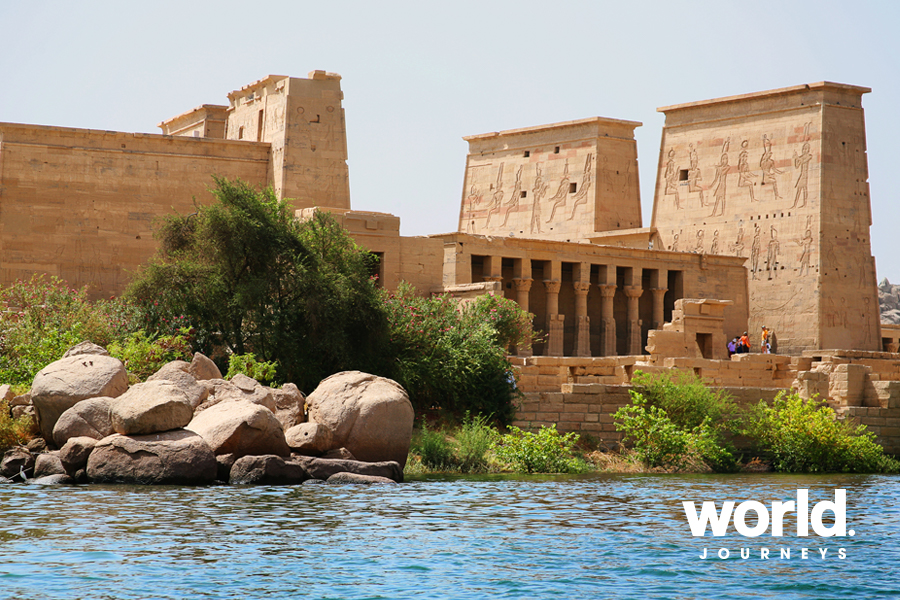
Cruise
Cruise the Nile
15 Days / 14 Nights
The River Nile between Cairo and Luxor has reopened, allowing...
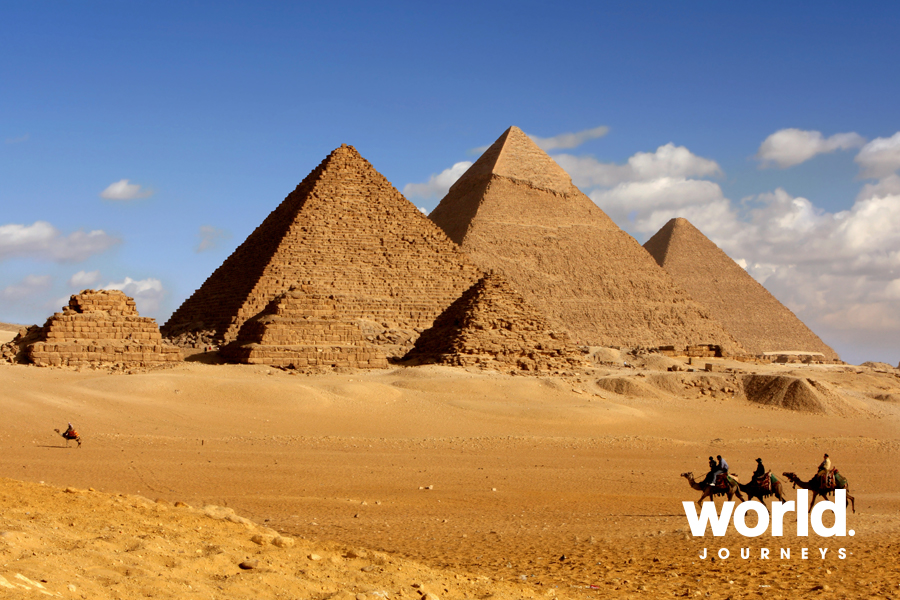
Cruise
Egyptian Sampler
9 Days / 8 Nights
The perfect introduction to Egypt, the itinerary follows the Nile...

